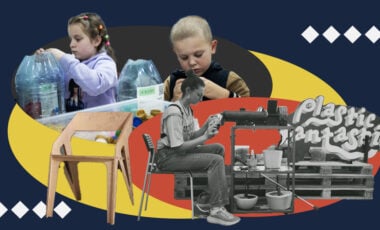Plan or do? Shopping and leisure of Ukrainians during the war – a survey

From the beginning of Russia's full-scale invasion of Ukraine our planning horizon has been reduced from weeks during COVID-19 to days. Consumption of goods and services has narrowed to a list of essentials. How do Ukrainians plan and implement plans? Gradus Research asked at the beginning of the summer what events or significant purchases respondents plan to make over the next month, and in July we repeated the question, checking what plans were implemented.
According to the survey results, there are three groups of plans and their implementation.
The first group of events is what people do even more often than they plan. This applies primarily to plans to meet with relatives or friends. Here we note that respondents focus on things that relate to loved ones and family, and are not associated with high expenses. More than half of the respondents (55.4%) met with relatives during the war, especially in the Western region (67.2%). Another 47% of respondents met with friends, Kyiv residents did it more often than others (62.1%).
This category also includes visits to a hairdresser (28.3% had it in their plans against 40.2% who used this service) and visits to cafés / restaurants: 16.7% of respondents planned, while about a quarter of the population (24.1%) had been there last month.
There were also such activities as the purchase of household appliances and electronics. 20.7% of respondents in a situation of hryvnia instability decided to make this kind of affordable investment.
The second group of events are those in which the plans coincide with the implementation. This applies, firstly, to personal matters, such as scheduled visits to the doctor, changing the wardrobe or manicure.
The expenses that Ukrainians plan and consistently implement during the war is taking care of their health. 18.1% of respondents had preventive examinations with doctors, 5.4% of respondents bought or extended insurance for themselves or family members.
Beauty services such as manicure, pedicure or a visit to the beautician are predominantly female intentions and are done by women, no matter what happens.
Shopping becomes more planned. Over the past month, every fifth Ukrainian (19.3%) changed their wardrobe. This is also explained by the fact that people who had to leave their places of permanent residence did not have with them clothes suitable for the season. Most often, new clothes were bought by representatives of the 18-24 age group (24.9%).
The third group of events are those that were planned more often than they were implemented. All of them are marked by high risk level (going on a picnic, going on vacation) or significant expenses (housing, cars, repairs, etc.). Such plans are more a manifestation of desire than real intention. Most Ukrainians generally refuse to travel during the summer holidays. Only 3.5% of respondents went on holiday within Ukraine, and even fewer citizens chose the option to go on vacation abroad – 2.3%. They almost don't buy cars, real estate or furniture, they also refuse plans to make repairs to their homes.
"We see how the war forced people to change their habits and priorities in consumption. Shopping becomes more planned and driven by needs. But despite the war, Ukrainians are trying to regain at least a small piece of "normal life" by spending money on small pleasures: visiting a café with friends, going for a manicure, or maintaining good health. This allows people to stay in an adequate psychological state, living in war conditions for more than five months," comments Evgeniya Bliznyuk, sociologist, CEO&Founder of Gradus Research.
Summing up, we can say that Ukrainians value their close environment and spend more time with friends and relatives than they plan. Ukrainians are still not ready for the significant expenses or extra risks associated with travel, however, despite the war, they do not forget about taking care of themselves and their health.
The survey was conducted by the research company Gradus Research using a self-filled questionnaire in a mobile application. The Gradus online panel displays the population structure of cities with more than 50,000 inhabitants aged 18-60 by gender, age, settlement size and region. Survey period: first wave – June 21-22, 2022 (sample size: 1000 respondents), second wave – June 20-25, 2022 (sample size: 884 respondents).






















































